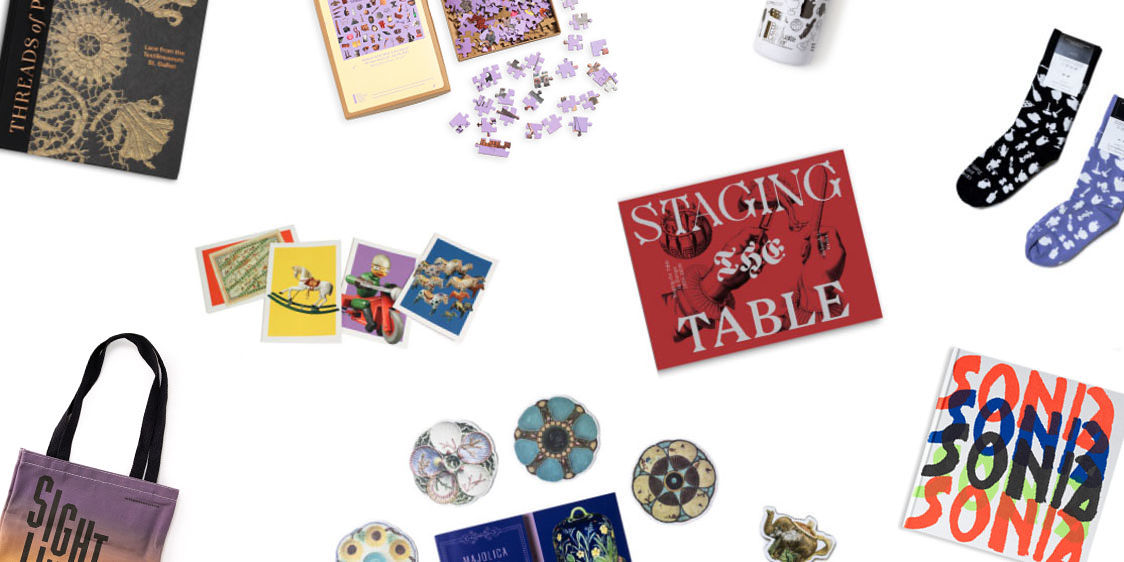In 2005, librarian Heather Topcik began tilling the soil for the creation of the Bard Graduate Center archives. Looking back on the years after she was hired in 2001, she recalled, “From my perspective in the library, BGC was producing a wide variety of content around both exhibitions, academic programs and events, but there was no system in place to preserve and document the history of our young, but quickly growing institution. In the first decade, it seemed too soon to create an archive, so the library just started to collect as much ephemera as we could from each department.” For many years, this vertical file containing exhibition brochures and gallery posters lived in the library’s lower level as an informal record of BGC history. However, in the months leading up to the celebration of BGC’s twentieth anniversary in 2013, the need for a more robust and easily accessible archive became increasingly evident when locating specific documentary materials to illustrate this important milestone proved to be a challenge.
That same year, Mike Satalof was hired as a Digital Imaging Specialist in the BGC’s Visual Media Resources Department. With a library degree in archives, he had experience cataloging and digitizing materials at the Brooklyn Historical Society and New-York Historical Society, and Topcik was able to expand his position to help address the deteriorating images in BGC’s early exhibition files. Satalof recalled, “If you wanted to see the installation views from Susan Weber’s first exhibition, you had to dig the slides out of Bard Hall, dust them off, and scan them in a slide scanner, which is not great for preservation or for access.” The library proposed a pilot project to rehouse and digitize all of the deteriorating gallery images before they were permanently lost. Satalof completed that project and went on to work closely with Nina Stritzler-Levine, former gallery director and current professor of curatorial practice, to establish archival practices that would adhere to the Society of American Archivists’ standards and also meet BGC’s specific needs. At the same time, all of the Gallery’s past exhibition files were collected and moved to a dedicated space at Bard Hall to await processing.
In 2020, the onset of the Covid-19 pandemic brought this work to a sudden halt. However, ultimately, the shutdown marked a turning point for BGC’s archival initiative. With the gallery closed, making exhibition content accessible on the internet became crucial, leading to an increased institutional enthusiasm for digital archiving. Additionally, it gave BGC staff the opportunity to revisit past exhibitions leading associate curator Emma Cormack and director of Digital Humanities / Digital Exhibitions Jesse Merandy to launch the Exhibition Archives Project—an initiative to preserve past and future exhibitions in website form. Satalof consulted on this project, and when things were back up and running again, he was promoted to a new position at BGC: archivist and digital preservation specialist.
With an experienced archivist now firmly embedded, Topcik will be able to realize the vision she had for the archives back in 2005. She described BGC’s archival process as “tending to our assets.” As a non-collecting institution (although it has formed a small, but growing, study collection over the past 10 years), some of Bard Graduate Center’s most important assets are the research and conversations that professors, curators, designers, students, and fellows produce when putting together exhibitions. To “make research visible,” as Dean Peter N. Miller puts it, Satalof gets involved in the exhibition-making process early: archiving email chains, Google docs, and tracking the development of exhibition themes through planning notes and loan research. In order to archive the research that went into Conserving Active Matter, an exhibition that closed shortly after he resumed working at BGC, Satalof worked closely with curator Soon Kai Poh. This was a particularly rewarding collaboration between curator and archivist due to Poh’s interest in digital conservation, a theme he highlighted in the exhibition.
Satalof is still in the thick of processing and archiving a variety of materials from the eighty-plus exhibitions BGC has launched since its inception, a task he will be working on for some time. He said, “Part of the challenge of trying to process this thirty-year backlog, much of which hasn’t been cataloged and preserved, balancing the analog material from the early years and the recent born-digital material, which in a way faces greater risks of a different kind due to the impermanence of the web.” Recent digital material includes Qualifying Projects created by second-year MA students and online exhibitions that require regular maintenance and care to prevent them from malfunctioning if software goes out of date. In addition, he is putting together an overview of Bard Graduate Center’s exhibition history, which he expects to launch on the BGC website early next year to coincide with BGC’s thirtieth anniversary. Providing a baseline for the public and researchers to learn about the entirety of BGC’s exhibition history, it will include checklists, object highlights, installation images, and press coverage. As Topcik and Satalof diligently tend to the archives, they try to be as self-reflective as possible, acknowledging the implicit bias of any archivist and rejecting the archaic notion that archives are neutral. Moving forward, they hope to broaden their scope by incorporating the voices of students and the community.
Mackensie Griffin is a second-year BGC MA student.














